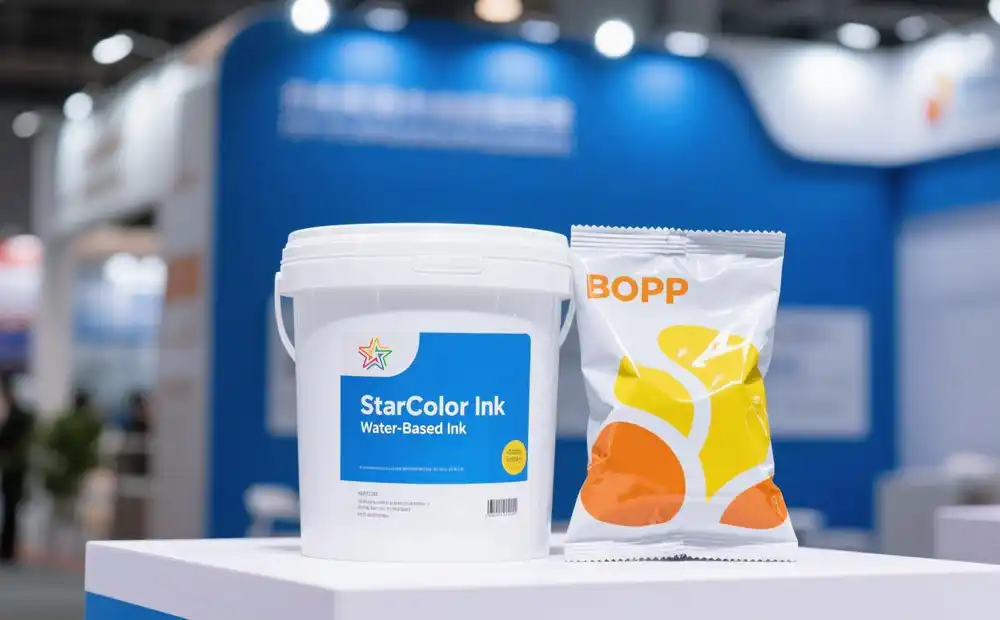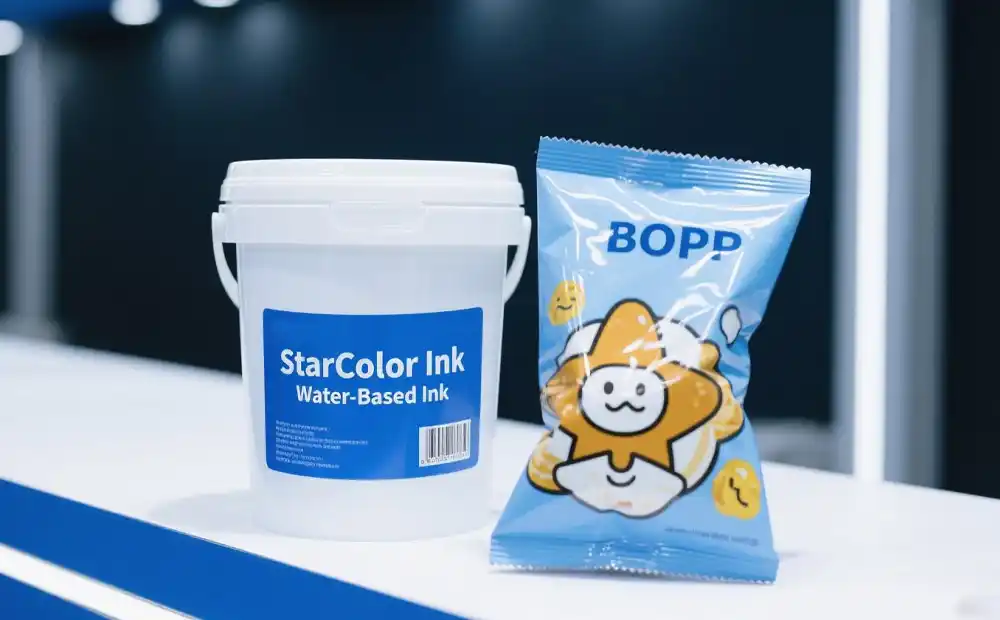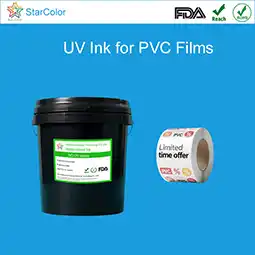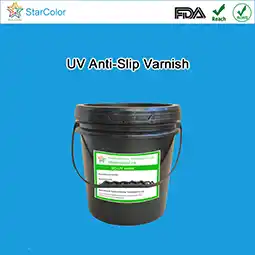Case Study: Cutting VOC Emissions in BOPP Printing with Water Based Inks
Date: Aug 11 2025 From: Star Color Views:
Company Background and Challenges
This leading packaging printing enterprise has long focused on producing packaging for food, daily necessities, etc., with BOPP film printing accounting for 40% of its business. Previously, the company used solvent-based inks, which delivered good printing results but presented severe challenges:- Environmental compliance pressure: Local environmental authorities set limits on VOC emission concentrations and totals in printing workshops. The company’s existing emission levels far exceeded standards, risking heavy fines.
- Employee health hazards: Volatile fumes from solvent-based inks were pungent, and long-term exposure led to respiratory diseases among employees, increasing staff turnover.
- Market competition demands: Brand clients increasingly valued the environmental attributes of products and raised higher green standards for packaging printing. Failure to improve would result in lost orders.

Water-Based Ink Selection Process
Faced with these difficulties, the company decided to switch from solvent-based to water-based inks. During the selection phase, a professional evaluation team was formed to research multiple water-based ink suppliers. After initial screening, 3 representative suppliers entered the testing stage. The team evaluated candidate inks against key indicators:1. VOC Content
In accordance with China’s national standard GB 38507-2020 Limits of Volatile Organic Compounds (VOCs) in Inks, which requires VOCs ≤30% for gravure inks on non-absorbent substrates, precise testing via gas chromatograph showed that Zhongzhixing’s water-based ink had a VOC content of only 16.1%—far below the national standard and competitors’ products.2. Printing Suitability
Test printing was conducted on the company’s existing BOPP printing equipment (6-color gravure press, maximum speed 300 m/min), focusing on drying speed, dot reproduction clarity, and ink transfer uniformity. While some water-based inks had slow drying speeds that hindered efficiency, the target ink, with an optimized formula, achieved surface drying time ≤2 seconds and complete drying time ≤8 seconds under 60-80°C drying conditions, meeting high-speed printing needs. Dot reproduction was clear, with 50% dot enlargement rate ≤15%, and printed patterns featured sharp edges and vibrant colors.3. Adhesion and Lamination Strength
Adhesion to non-polar BOPP surfaces is critical for water-based inks. Using the ASTM D3359 cross-cut method, the target ink achieved 4B-5B adhesion on corona-treated BOPP film. In lamination strength tests, after lamination with common film materials, the peel strength met packaging processing requirements, effectively preventing delamination in subsequent processes.4. Cost-Effectiveness
Comprehensive costs included ink procurement, consumption during printing, and potential equipment modification. Though the water-based ink had a slightly higher unit price than solvent-based alternatives, its high-solids, low-viscosity formula reduced ink consumption per unit area by 20%-30%. No large-scale equipment modifications were needed—only adjustments to drying temperature curves and some dampening system parameters—making its long-term cost advantage evident.After 3 months of rigorous testing and comparative analysis, the company selected Zhongzhixing’s water-based ink for BOPP film printing.
Production Process Adjustments and Optimization
After introducing water-based inks, the company comprehensively adjusted and optimized production processes to maximize ink performance while ensuring production stability and product quality.1. Equipment Modifications
The drying system was upgraded to an “infrared + hot air” combined drying method to improve efficiency and reduce energy consumption. An infrared preheating zone was added to evaporate part of the moisture before hot air drying, shortening overall drying time. Oven temperature distribution was adjusted for uniformity, avoiding poor drying or film defects from uneven heating. Additionally, the press’s ink circuit system was cleaned and calibrated to ensure smooth ink delivery.2. Parameter Optimization
Extensive experiments determined optimal printing parameters: ink viscosity controlled at 25-35cps for good fluidity and transfer; printing pressure adjusted to 10-15N/cm² to ensure sufficient ink transfer without damaging the plate roller or film; drying temperatures set as: infrared preheating zone 70-80°C, hot air drying front section 80-90°C, and rear section 90-100°C, with real-time adjustments based on speed and drying conditions.Implementation Effects and Benefit Analysis
After 6 months of operation, the application of water-based inks in BOPP printing yielded significant results:1. Remarkable VOC Emission Reduction
Third-party testing showed workshop VOC concentrations dropped from 800mg/m³ (with solvent-based inks) to below 100mg/m³, meeting local standards—a reduction rate of 87.5%. This reduced environmental compliance risks, improved workplace conditions, and minimized employee health hazards.2. Stable Improvement in Printing Quality
Water-based ink-printed BOPP products achieved or exceeded solvent-based ink standards in color vibrancy, dot clarity, and adhesion. The rejection rate fell from 5% to below 2%, reducing material waste and production costs.3. Cost Control and Economic Benefits
Despite higher procurement costs, reduced unit-area ink consumption, coupled with long-term savings from equipment modifications and energy optimization, lowered comprehensive printing costs by 10%-15%. Enhanced environmental reputation attracted more high-end brand orders, driving business growth of over 20% with significant economic returns.
Experience Summary
The company’s success in reducing BOPP printing VOCs offers valuable lessons for the packaging printing industry:- Environmental transformation is imperative: With stricter regulations and shifting market demands, printing enterprises should proactively embrace green reforms, planning ink replacement and other upgrades early to seize market opportunities and avoid operational crises from non-compliance.
- Scientific selection is crucial: Enterprises must develop comprehensive evaluation criteria based on their equipment, processes, and product requirements, selecting products with optimal performance and cost through rigorous testing to ensure stable operation and desired environmental/quality outcomes.
- Process optimization is indispensable: After introducing water-based inks, systematic process optimization—including equipment modifications, parameter adjustments, and staff training—is needed to match equipment with ink performance, maximizing advantages while ensuring efficiency and quality.
- Long-term benefit perspective: Enterprises should consider long-term factors in environmental investment decisions, including compliance, quality improvement, market competitiveness, and potential returns, recognizing green transformation as a necessary investment for sustainable development.
In conclusion, through rational water-based ink selection and production process optimization, packaging printing enterprises can reduce BOPP printing VOC emissions while enhancing product quality and economic benefits, achieving a win-win for green development and industrial upgrading, and setting an example for sustainable industry growth.
 RU
RU EN
EN CN
CN















